
 |
|
|
|
#1
|
|||||
|
|||||
|
once again, nice LED corals Adam! I need to get in on some of that cerealis action there !
|
|
#2
|
|||||
|
|||||
|
haha, I can't remember which one the cerealis is, but it's yours!
|
|
#3
|
|||||
|
|||||
|
So it turns out you actually need to be kind of careful with MB7. After dealing with a cyano issue with an aggressive dosing of chemi-clean, I stepped up the use/change of GFO and started dosing the 'start up' dose of MB7 for high nutrient tanks, which in my tank worked out to about 70ml a day. I missed a couple of days to go up north over the holidays, but otherwise I was pretty religious about it, including turning off the skimmer.
I ran the inlet/outlet lines of the BP reactor in a bucket of salt water for the first 4 or 5 days after the chemiclean treatment while I started dosing the MB7 because I have no idea what chemiclean does to biopellets and I didn't want a bunch of excess organic carbon to flood my tank, potentially giving the cyano a leg up over the MB7. When I put the reactor back online with the tank, I put about half the daily dose of MB7 directly in to the pellet reactor to get things going again. Now, I have to say I was extremely suspicious of MB7, and bacterial supplements in general. I've used them before and never saw an effect of any kind, and I've always been highly suspicious of aquarium supply company claims in general (they use as much pseudo-scientific non-sense speak as the alternative health industry), as well as being suspicious that a bacterial product could have anything living in it by the time you bought it at the store. Well, I suppose the proof is in the pudding - 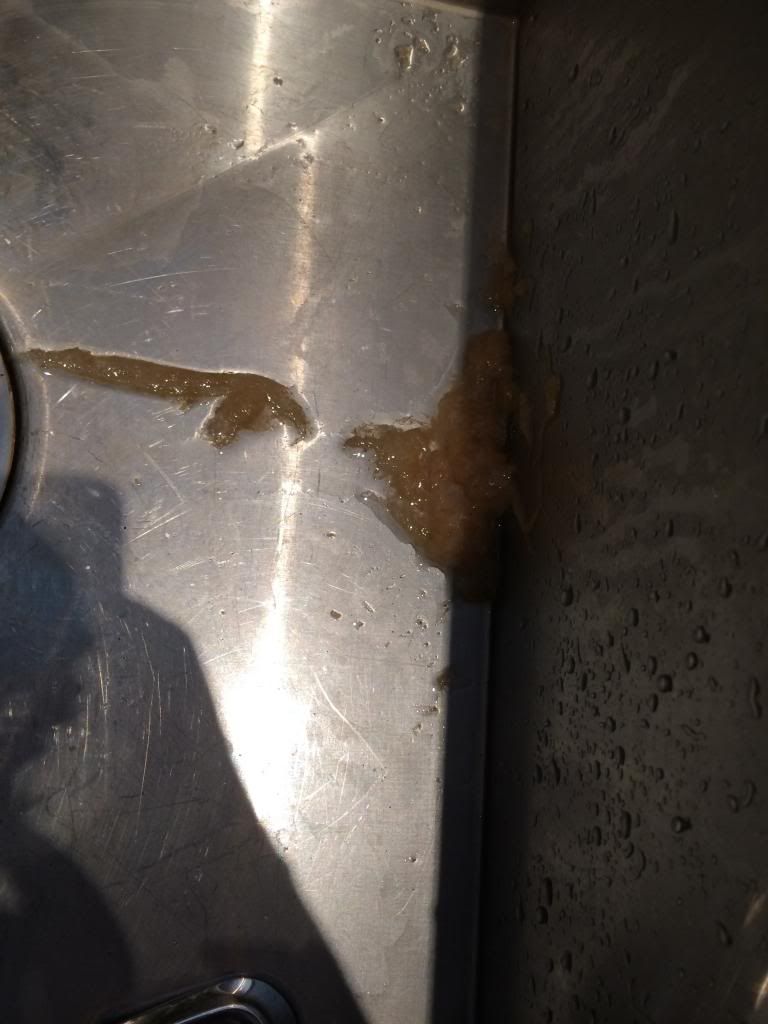 That disgusting pile of what looks like mucous is 1/4 of the goo that I had to eject from the outlet hose of my recirculating biopellet reactor yesterday. In less than two weeks of dosing large volumes of MB7, that outlet hose, which has remained clear and free flowing for nearly 2 years, clogged up so badly with that crap that water completely stopped flowing through the reactor. It's recirculating, so there was still some movement of water inside the reactor, but with the outlet blocked it slowed down enough that massive orange sized wads of white bacterial mulm had formed on the surface of the pellets that were largely stuck together. The foam pads in my GFO reactor have also completely clogged up with bacterial mulm, causing the entire column, along with the foam pads, to rise all the way to the top of the reactor. Something that also, in nearly 2 years of running the tank, has never happened. I've gone down to the daily maintenance dose of MB7, which if I'me measuring the volume of a 'drop' correctly, is about 6ml, so hopefully this stops happening. |
|
#4
|
|||||
|
|||||
|
Wow that's a lot of bacterial slime! Good thing you caught that, if it was to build up more, imagine if the BP reactor got plugged.
|
|
#5
|
|||||
|
|||||
|
Quote:
|
|
#6
|
|||||
|
|||||
|
Quote:
Also, I have never recirculated my bio pellet reactor, and not sure what that would do. The output has always gone to my skimmer. And I never turn off my skimmer when I dose MB7. Maybe that white goo includes carbon from the bio pellets that aren't being skimmed off. Like I said before, I have never seen what you describe. In fact, only the opposite, ie the absence of mulm, and very clean reactors. Even my sand and tank in general were cleaner with the use of MB7.
__________________
Reef Pilot's Undersea Oasis: http://www.canreef.com/vbulletin/sho...d.php?t=102101 Frags FS: http://www.canreef.com/vbulletin/sho...d.php?t=115022 Solutions are easy. The real difficulty lies in discovering the problem. |
|
#7
|
|||||
|
|||||
|
Quote:
And a recirculating pellet reactor is just one design for a reactor. It lets you tumble the pellets at whatever rate you want them moving independent of the amount of actual water flow through. I'm not sure that the design will ever catch on (I think there's only a couple of brands making them still) but when I set up my tank they were touted as the next big thing. Apparently they solved the problem of pellet reactors stripping tanks of all nutrients when you pushed enough water through them to get a good tumble. They were supposed to let you 'dial in' the nitrate levels proactively, increasing or decreasing the output as needed. You can dial back the actual amount of water that gets processed per minute without risking the pellets clumping. I've had the outlet valve opened to 100% for like a year though so I'm not sure it was worth the added expense. The valves still need to be balanced though, so if the outlet line clogs up, or you reduce the output on purpose, you need to increase the flow on the recirculating valve to compensate, which is why the reactor starts to shut down if it clogs and you don't see it happening. My outlet line still goes directly to the skimmer intake. And I'm not sure why it's happening, I'm thinking maybe there were more nutrients in my tank than I thought? One would assume that if you dose bacteria in to a system with food for the bacteria, you'd get a bacterial proliferation, which on the one hand is good because it means that the nutrients are being consumed, but surprising at how strong the response is? It's only been a couple of days at the low dose, so we'll see if it calms down. I have to feed A LOT because of that cowfish, which can only increase the amounts of everything. |
|
#8
|
|||||
|
|||||
|
Well, this is definitely interesting. Must be some kind if imbalance, but not sure exactly what.
I actually only dose about 2 or 3 times per week (20ml total per week) for a 230g system (I don't incl my sump, as figure I subtract that much for the live rock). Been doing that for 2+ years now, and everything has been good. Have not opened by bio pellet reactor (to add pellets or clean) now for over a year. Seems that my bio pellet consumption has all but stopped, but my nitrates remain at zero. And remember, when I started all this (3.5 years ago), my tank (which I inherited when we bought the house) was a total mess with nitrates up to 100 ppm, cyano, algae, detritus, you name it...
__________________
Reef Pilot's Undersea Oasis: http://www.canreef.com/vbulletin/sho...d.php?t=102101 Frags FS: http://www.canreef.com/vbulletin/sho...d.php?t=115022 Solutions are easy. The real difficulty lies in discovering the problem. |
|
#9
|
|||||
|
|||||
|
Did some re-working of my sump last weekend. Two things about my sump have bothered me from almost day 1.
1 - I have too many things that require pumps and power in my sump. The only place to put them is the water change chamber mostly, which makes it cluttered and takes up volume. 2 - My sump is a micro-bubble factory. It's U shaped, as in to say water entered and exits the sump on the same side, but since going back to regular durso style overflows I have come to realize that my design allows for a fair amount of water to basically bypass the entire sump, which doesn't give the microbubbles from the overflow time to rise and pop. Unfortunately I don't have many pictures of how it used to be, but the changes were thus: I previously had one pump running my GFO reactor, and a separate pump whose sole purpose was to drain water from my sump for water changes. The GFO reactor pump was VASTLY over-powered for the amount of flow I needed, and the other pump, which wasn't as powerful was taking up a lot of space for only ever getting turned on for 6 minutes every 10 days. I got rid of the over-powered GFO pump and through some fancy plumbing, set up my water change pump to have more than one function 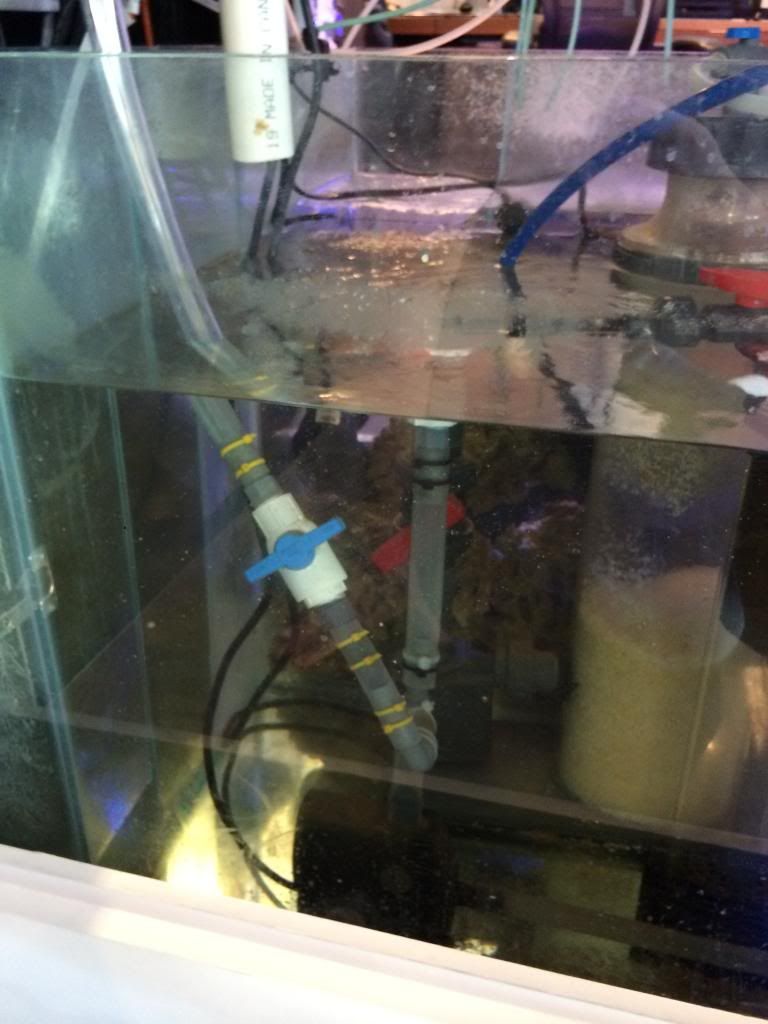 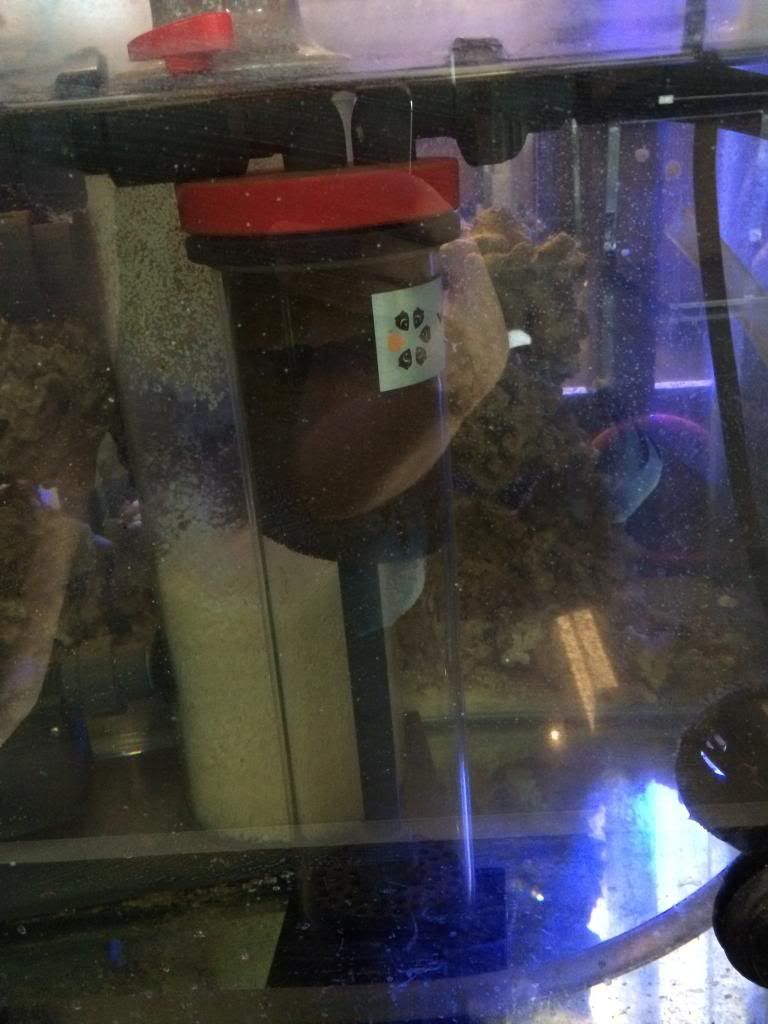 I t'd the line coming off the water change pump that previously went straight to a drain to the sewer, so that when the valve you see there is closed, water flows in to the reactor. When I'm doing water changes, I close the valve on the top of the reactor, and open the valve to the sewer and that pump drains my sump. Since a failure here would obviously be catastrophic, there's a second gate valve further along the pipe closer to the sewer drain, so two gate valves would need to fail for that pump to start draining my tank. I also put the first gate valve well below the water line, because the line is under some pressure from the reactor flow being throttled. This way if there is a failure in my hoses the pump won't go spraying water all over the inside of my cabinet. I also took a piece of acrylic and siliconed it to one of the exits from my skimmer chamber. Previously, water leaving the skimmer chamber was split by a bulkhead, with half flowing in to a skinny and long 'frag chamber' (though I've only ever used it as a cryptic refugium filled with live rock and sponges), and half flowing in to the large water change chamber. The water that went directly in to the water change chamber could then make a quick 90 degree turn and flow in to the return chamber, taking all sorts of micro bubbles with it. I don't remember my logic for thinking that the 'frag' chamber couldn't handle 100% of the flow of the sump, but with this acrylic piece in place, water now is forced to make the full journey from one of the the sump to the other. 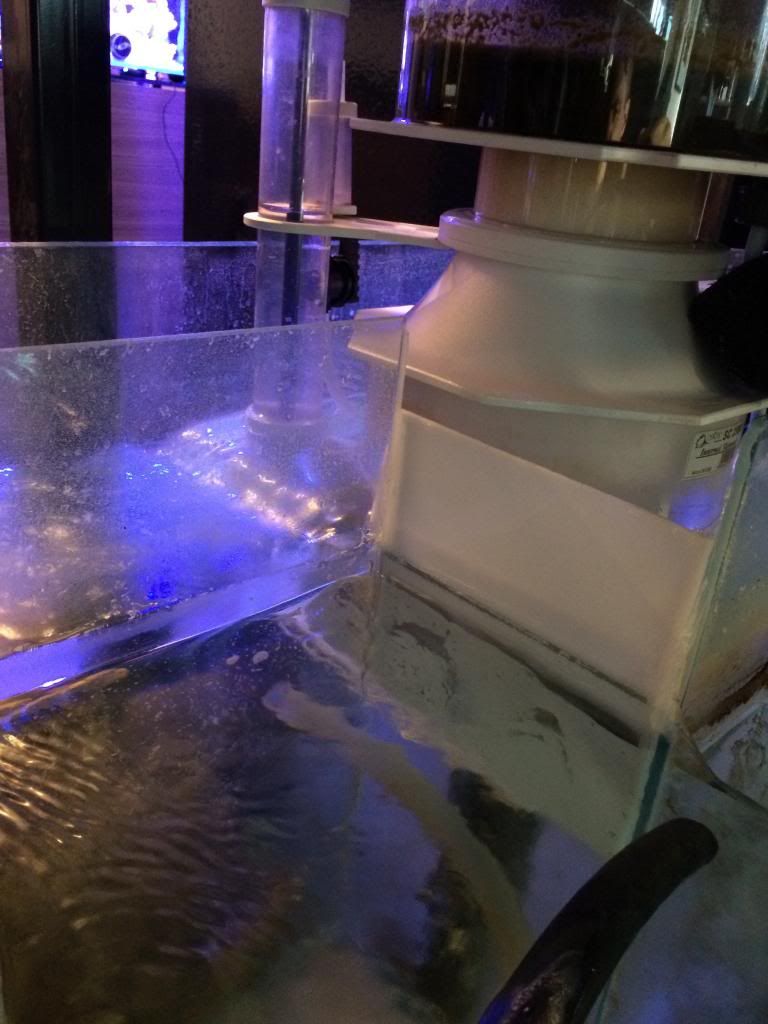 Before I had to run filter socks, or my tank was a micro bubble mess. Now without filter socks, there's about as many micro-bubbles as there were with a fresh sock on the tank before. With filter socks, there's now zero micro bubbles. And even though very little has changed because I chopped so much stuff back, some gratuitous full tank shots because I can 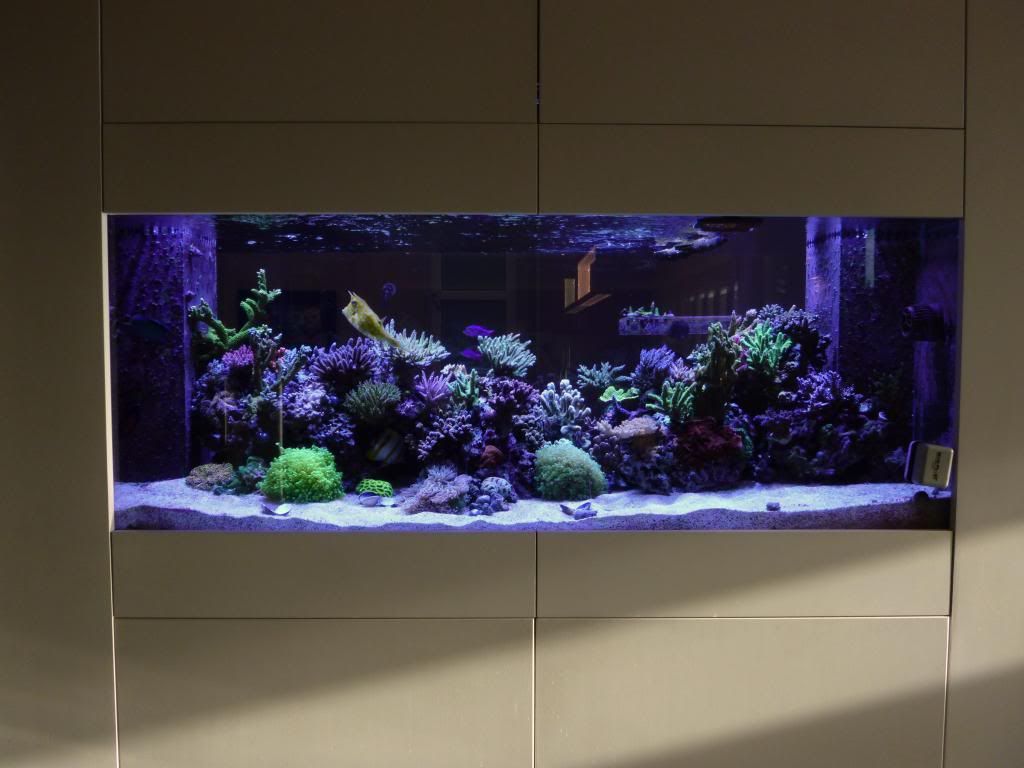  |